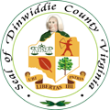What is Parkinson's Disease (PD)?
Parkinson's disease (PD) belongs to a group of conditions called motor system disorders, which cause unintended or uncontrollable movements of the body. The precise cause of PD is unknown, but some cases are hereditary while others are thought to occur from a combination of genetics and environmental factors that trigger the disease. In PD, brain cells become damaged or die in the part of the brain that produces dopamine--a chemical needed to produce smooth, purposeful movement.
The four primary symptoms of PD are:
- tremor--shaking that has a characteristic rhythmic back and forth motion
- rigidity--muscle stiffness or a resistance to movement, where muscles remain constantly tense and contracted
- bradykinesia--slowing of spontaneous and automatic movement that can make it difficult to perform simple tasks or rapidly perform routine movements
- postural instability--impaired balance and changes in posture that can increase the risk of falls.
Other symptoms may include difficulty swallowing, chewing, or speaking; emotional changes; urinary problems or constipation; dementia or other cognitive problems; fatigue; and problems sleeping.
PD usually affects people around the age of 70 years but can occur earlier. Women are more affected by PD. Currently, there are no specific tests that diagnose sporadic PD.
Treatment
At present, there is no cure for PD, but a variety of medications provide dramatic relief from the symptoms. Usually, affected individuals are given levodopa combined with carbidopa. Carbidopa delays the conversion of levodopa into dopamine until it reaches the brain. Nerve cells can use levodopa to make dopamine and replenish the brain's dwindling supply. Although levodopa helps most people with PD, not everyone responds equally to the drug. Bradykinesia and rigidity respond best, while tremor may be only marginally reduced. Problems with balance and other symptoms may not be alleviated at all. Anticholinergic drugs may help control tremor and rigidity. Other drugs, such as pramipexole, apomorphine, and ropinirole, mimic the role of dopamine in the brain, causing the nerve cells to react as they would to dopamine.
An antiviral drug, amantadine, also appears to reduce symptoms. Safinamide tablets and istradefylline tablets are add-on treatments for individuals with PD who are currently taking levodopa/carbidopa and experiencing "off" episodes (when the person's medications are not working well, causing an increase in PD symptoms). Other drugs to treat PD include COMT inhibitors, which prolong the effects of levodopa by preventing the breakdown of dopamine, and MAO-B inhibitors, which block or reduce activity of the MAO-B enzyme that breaks down dopamine in the brain.
In some cases, surgery may be appropriate if the disease doesn't respond to drugs. One option is deep brain stimulation (DBS), in which electrodes are implanted into the brain and connected to a small electrical device called a pulse generator to painlessly stimulate the brain to block signals that cause many of the motor symptoms of PD. DBS is generally appropriate for people with levodopa-responsive PD who have developed dyskinesias or other disabling "off" symptoms despite drug therapy. However, DBS does not stop PD from progressing and some problems may gradually return.
Prognosis
PD is both chronic, meaning it persists over a long period of time, and progressive, meaning its symptoms grow worse over time. Although some people become severely disabled, others experience only minor motor disruptions. Tremor is the major symptom for some individuals, while for others tremor is only a minor complaint and other symptoms are more troublesome. It is currently not possible to predict which symptoms will affect an individual, and the intensity of the symptoms also varies from person to person.
